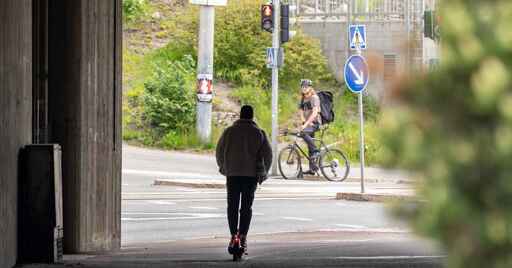Helsinki has not recorded a single traffic fatality in the past 12 months, city and police officials confirmed this week.
The city’s most recent fatal accident occurred in early July 2024 on Keinulaudantie in the city’s Kontula district.
Authorities are calling the situation exceptional.
“A lot of factors contributed to this, but speed limits are one of the most important,” said Roni Utriainen, a traffic engineer with the city’s Urban Environment Division.
…
According to Utriainen, more than half of Helsinki’s streets now have a speed limit of 30 km/h. Fifty years ago, that proportion featured 50 km/h limits.
Earlier this summer, Helsinki decided to lower speed limits near schools to 30 km/h, a measure that is set to take effect as the academic year begins.
…



I think you are misunderstanding.
Divided highways in Finland have speed limits of 100-120km/h.
If you build a new road that looks like a divided highway, but you put up 30km/h signage… People are going to drive 120km/h. They aren’t going to drive 30km/h just because it is the posted speed limit. They are going to drive the 120km/h that they drive on every other road that looks like this one.
Major roads in urban areas of Finland have speed limits of 50km/h.
If you build a new road that looks like a major road, and you put up 30km/h signs… people are going to drive 50km/h.
Here’s the important part that you’re not quite following: Residential roads in Finland are 30km/h. If you build a road that looks like a residential road, and you put up 50km/h signs… people are going to drive 30km/h, not 50.
Nobody is saying we should get rid of the speed limits. Yes, we certainly do need them. What we are saying is that people are going to drive at the speeds that the road design supports, regardless of the posted speed limit. If you actually want people to drive 30km/h, your road needs to look and feel like a 30km/h road.
Anecdotal, but I lived in a rather large allotment, established in the 1960s. We had no pavement markings on the blacktop. No edge lines, no center lines. Everyone drove 20-25mph throughout. Then, the city decided to paint solid centerlines and edge lines on the primary access road through the allotment. Now, everyone drives 35-45mph on that part, while they’re still at 20-25mph in the rest of the allotment. The pavement markings make the exact same road feel like a primary artery rather than a residential side street.
If you wanted to accomplish the reverse, you could withhold the centerline markings and paint crosswalks instead. Paradoxically, two-way stops or even “yield” signs can (in certain cases) reduce speeds more than 4-way stops.